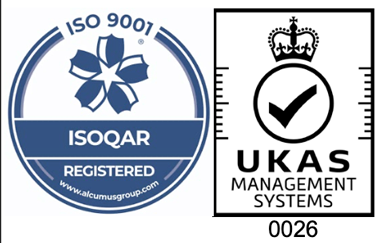Rubber Products and Freezing Temperatures
16th May, 2024
Rubber products that are suitable for environments that experience freezing temperatures are vital for reliability, safety and compliance. Using rubber products that are most suited to an environment can also reduce costs for replacing parts and improve performance.
In this article, we’ll cover how rubber can withstand cold temperatures and highlight which types of rubber are ideal for extremely cold environments.
Why is rubber ideal for extreme cold temperatures?
Unlike many plastics and other materials, rubber is less prone to becoming brittle and fracturing at low temperatures. Rubber’s molecular structure and the presence of additives, such as plasticizers and fillers, help prevent the formation of microcracks and maintain its toughness in extreme cold.
Rubber materials typically remain flexible and resilient even at very low temperatures. This flexibility is crucial for applications where rubber components need to maintain their functionality, such as seals, gaskets, and tires in cold climates or refrigeration systems.
Types of rubber for low-temperature resistance:
Natural Rubber – Natural rubber has a high degree of resilience, tensile strength, and tear resistance. In addition to outstanding wear resistance, it has a low permanent set and good flexing capabilities at low temperatures. The average temperature range for natural rubber is from -60° to + 75°C. Natural rubber is also ideal for a more environmentally friendly option.
Silicone Rubber – Silicone rubber maintains its flexibility and elasticity over a wide temperature range, including extreme cold temperatures. It can withstand temperatures as low as -60°C without losing its mechanical properties. Silicone rubber is commonly used in cold weather seals, freezer gaskets, and medical devices where flexibility and resilience in cold environments are critical.
Neoprene – Neoprene rubber offers moderate resistance to low temperatures and remains flexible at temperatures down to approximately -40°C. It is commonly used in applications requiring resistance to cold temperatures and exposure to oils, chemicals, and weathering, such as in automotive seals, gaskets, and wetsuits.
Nitrile Rubber – Nitrile rubber exhibits good resistance to low temperatures and is often used in cold environments requiring flexibility and resilience. Nitrile rubber can maintain its properties at temperatures as low as -50°C and is commonly used in seals, gaskets, and hoses for refrigeration systems, automotive components, and industrial equipment.
Why Choose Aquaseal Rubber?
At Aquaseal Rubber, our reputation within the industry & our vision for quality, value and customer service is second to none. We offer solutions to all your requirements no matter how large or small. All our products are available in a wide range of materials suitable for any environment. Contact our team to learn more.


